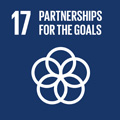- Docente: Paolo Martinelli
- Credits: 6
- SSD: M-FIL/05
- Language: Italian
- Teaching Mode: In-person learning (entirely or partially)
- Campus: Bologna
-
Corso:
Second cycle degree programme (LM) in
Semiotics (cod. 6824)
Also valid for Second cycle degree programme (LM) in Semiotics (cod. 8886)
-
from Nov 12, 2025 to Dec 19, 2025
Learning outcomes
At the end of the course, students will have achieved elements of theoretical reflection and basic technical skills on the issues of production, adaptation and dissemination of cultural content, with particular reference to: digital platforms (digital libraries, streaming platforms for cinema and music, online repositories), Minting of Non Fungible Tokens for digital artwork, ethics and aesthetics of artificial intelligence.No particular computer skills are required to attend the course.
Course contents
Over the past two decades, we have witnessed the digital transformation of cultural industry products. While this shift was initially understood as primarily affecting the material supports of these products (books, films, and music handled as files on a computer), it has now become clear that access, meaning-making, and interpretation have also been fundamentally reshaped within the digital context of editing and publishing.
Throughout the course, we will apply various semiotic theories to the analysis of existing digital platforms—exploring issues such as intersemiotic translation, user roles, intertextuality, and accessibility—and to the prototyping of experimental approaches to content creation and curation.
Several sessions will be dedicated to examining the relationship between digital cultural content (ebooks, audio files, videos, and digital art) and Non-Fungible Tokens (NFTs). In addition to a technical component focused on prototyping digital cultural products, the course will include an in-depth exploration of Generative Artificial Intelligence, as well as seminar-style meetings with professionals from the film and literary industries.
Readings/Bibliography
-
Benjamin, W. (1974). L'opera d'arte nell'epoca della sua riproducibilità tecnica. Torino: Einaudi.
-
Eco, U. (1984) Semiotica e filosofia del linguaggio. Torino: Einaudi. (da p.40 a p.54)
-
Floridi, L. (2022) Etica dell’intelligenza artificiale. Milano: Raffaello Cortina Editore. (da p.21 a p.63)
-
Manovich, L. (2020) L'estetica dell'intelligenza artificiale. Roma: Luca Sossella.
-
Martinelli, P. (2025 in press) Literacy. Semiotica evolutiva dell'apprendimento. Roma: Luca Sossella (capitoli 1, 2 e 4).
-
Paolucci, C. (2025 in press) Nati Cyborg. Roma: Luca Sossella.
-
Paolucci, Claudio; Martinelli, Paolo; Bacaro, Martina, Can we really free ourselves from stereotypes? A semiotic point of view on clichés and disability studies, «SEMIOTICA», 2023, 253, pp. 1 - 34 [articolo]
Teaching methods
The course consists of lectures and hands-on workshops involving the use of digital devices.
Assessment methods
The final exam consists of the discussion of a written paper (MAX 4,000 words) on a topic covered during the course, to be agreed upon with the instructor.
Students with Disabilities and Specific Learning Disorders (SLD)
Students with disabilities or specific learning disorders are entitled to special accommodations based on their condition, subject to assessment by the University Service for Students with Disabilities and SLD. Please do not contact the instructor directly, but instead reach out to the Service to schedule an appointment. The Service will determine the appropriate accommodations.
More information is available at:
https://site.unibo.it/studenti-con-disabilita-e-dsa/it/per-studenti
Teaching tools
Lessons will be conducted using the multimedia tools available at the Department. Occasionally, a B.Y.O.D. (Bring Your Own Device) approach will be adopted.
Office hours
See the website of Paolo Martinelli
SDGs



This teaching activity contributes to the achievement of the Sustainable Development Goals of the UN 2030 Agenda.
